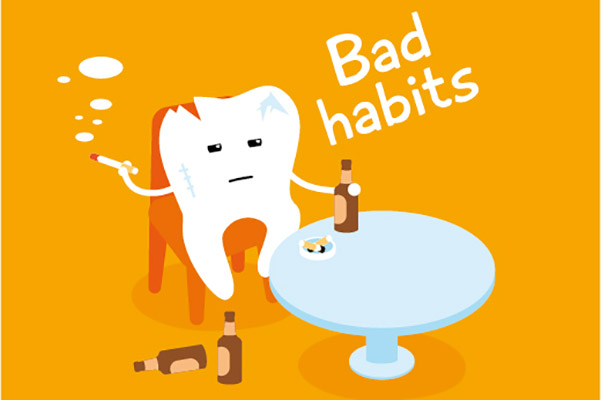How Many Hours a Day Are Recommended for the Best Results From Invisalign?

Invisalign® offers a discreet solution for crooked teeth. Unlike conventional metal braces, the custom aligner trays of Invisalign are almost undetectable. Before receiving your first set of trays, the dentist will review the whole treatment procedure with you. You must follow the compliance guideline after your treatment starts in order to get the desired outcomes. Continue reading for more information on Invisalign and to find out how long the aligners need to be worn.
Designing the Invisalign aligners
Patients will need to schedule an appointment with the dentist in order to get Invisalign. The dental professional will use an algorithmic software to develop a customized treatment plan for the patient’s teeth. First, they will take a 3D impression of the teeth. Invisalign will receive this information and other relevant details. Next, Invisalign will design the aligners to achieve the patient's straightening goals.
Invisalign aligners are made of a material called Smart Track. Neither BPS, BPA, gluten, nor latex are present in this FDA-approved, proprietary material. Since they are made of thermoplastic, the aligners are flexible and affix snugly to the teeth, which prevents concerns about cuts on the cheeks. The Smart Track material also enables patients to remove and re-insert their trays with ease. If patients properly switch out the aligners as their teeth shift, the aligners will always be a perfect fit. Due to this flexibility, the trays are able to move each tooth precisely, resulting in more accurate and targeted treatment outcomes.
Invisalign aligners are invisible and undetectable, much like a traditional retainer. After wearing the first set of trays for two weeks, patients will switch to the next aligner in the series. The typical length of time for the therapy is between 12 and 18 months.
How many hours a day should Invisalign be worn?
Constantly wearing Invisalign aligners on the teeth is required to straighten them. Dentists generally suggest wearing the aligner trays for 20 to 22 hours each day to get the best results from Invisalign treatment. Patients should wear them all day long, only taking them out to eat, drink, and clean their teeth. While this may seem to be a significant amount of time, patients can do their regular routine while wearing the aligners. Once they get used to the aligners, having them on all the time will become less of a hassle.
To ensure that the treatment progresses correctly ends within the anticipated timeframe, patients must stay consistent with wearing the aligner trays every day. Wearing the tray for at least 20 hours each day is adequate for standard timelines and outcomes.
The importance of the 22-hour compliance rule
Through micro-movements, Invisalign trays push teeth into the correct alignment. These tiny changes are spaced out over many months, so patients experience minimal pain during treatment. But the aligner trays need to be on the teeth to be effective. As a result, Invisalign advises wearing the trays for at least 20 to 22 hours each day. Patients are expected to follow this rule, and the trays are fabricated accordingly. Failure to adhere to this guideline may lead to problems, pain, and even treatment delays.
What happens if patients fail to wear the aligners as directed?
The dentist will provide a treatment schedule when patients get their first set of trays. The general timeframe is 12 to 18 months. Regular visits are important so the dentist can keep track of treatment progress. Failure to wear the trays may cause pain in the short term. Ignoring the 20-hour rule for extended periods also means patients should not expect to get their desired smile by the specified date.
Patients may be asked to wear their current trays for longer if the teeth fail to shift enough, which is typically due to not adhering to the 20- to 22-hour guideline. A new set of trays may even be necessary if the patient fails to wear them for the prescribed amount of time.
The teeth may revert to their normal position if patients take off the trays for a long period of time. By the time that they wear the trays again, they may experience mild discomfort. Patients must follow the 20- to 22-hour guideline to prevent this scenario.
The bottom line
Invisalign can help you get a straighter smile. You can get the aesthetic results that you want on schedule and with little pain if you follow the 20-to-22-hour compliance guideline. Contact our dental office to learn more about Invisalign or to get started.
Request an appointment here: https://www.gledhilldental.com or call Gledhill Dental at (509) 800-8410 for an appointment in our Kennewick office.
Check out what others are saying about our dental services on Yelp: Invisalign in Kennewick, WA.
Related Posts
Considering Invisalign®? Modern-day dentistry has allowed for the evolution of many types of teeth straightening options. Clear aligners are offered by a number of brands, with Invisalign® being the most popular. However, individuals who are considering teeth straightening may also consider braces, which are known to be the standard method for correcting crooked teeth, crowded…
Are you considering undergoing Invisalign®? Read on to learn more about this teeth-straightening treatment. Many people choose Invisalign® over conventional braces because it enables them to attain a straighter smile discreetly. Invisalign® treatment does not require patients to make drastic lifestyle changes, such as avoiding specific foods for the duration of their treatment. Opting for…
For those seeking a straighter smile, Invisalign® is a popular and effective choice for dental patients of various ages. Using clear aligner trays, this system provides a more discreet treatment option, often with less discomfort and in less time than traditional braces. Straightening crooked teeth can result in a host of helpful benefits:Improved appearanceFewer headachesReduced…
For patients in need of orthodontic care for a variety of issues, such as tooth gaps, crooked teeth or misaligned bites, both Invisalign® and traditional braces are potential treatment options. While many people seek a straight answer to which one of these alternatives is ideal, there are several factors that determine which route is better…


